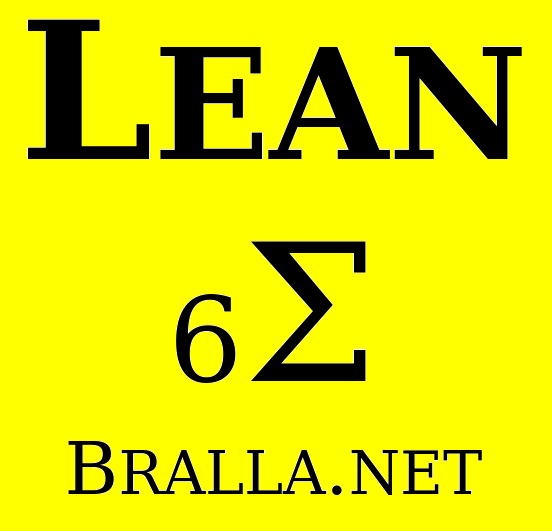Here are photos of examples of Visual Factory elements.
In my opinion, you can't over-do making the factory as visual as possible.
.jpg) |
Label all inventory locations.
If you can embellish the signage with information about the customer or final product, all the better.
|
| |
.jpg) |
Most factories now label their pipes so everyone instantly knows what fluid runs through them, instead of having to trace them back to their source.
|
| |
.jpg) |
Add as much information as possible to your signs.
If a part is used on multiple products, let everyone know.
(This might help prevent an error.)
|
| |
.jpg) |
If your product is a sub-component to a larger finished product, it is good to show everyone where or how it is used.
In this example, the product was shipped to a BMW assembly plant and was installed deep in the bowels of the instrument panel.
The product itself was hard to relate to anything (since it was so technical), but everyone can relate to the BMW vehicle in this photo.
The board also shows a CAD image of the product being made, as well as showing where on the instrument panel it was used.
Finally, since a BMW is a premium quality vehicle, everyone understood the need to make this product of premium quality.
|
| |
.jpg) |
An OSHA required label on a chemical storage barrel.
|
| |
.jpg) |
Not all signage has to be custom-printed.
In this case, operators were erroneously adjusting this fitting and making the problem worse.
The engineer wrote a very quick note saying not to adjust it, until he could make a final adjustment, lock it in place, and explain to everyone what he did.
|
| |
.jpg) |
What good is a warning light if nobody knows what it means?
Unlabeled flashing warning lights are surprisingly common in factories.
|
| |
.jpg) |
What do you do if you've got a large number of flashing warning lights?
Simple: You put up a sign to list them.
This department had several different flashing warning lights,
and also had a steady stream of temporary associates who would not remember what each light meant.
To solve that problem, they hung this sign in the middle of the department.
(They also labeled each light too.)
|
| |
.jpg) |
This is one of my favorite photos.
I was on an airplane waiting to take off, and I noticed this labeling on the emergency exit.
I asked the flight attendant about it (who thought I was a little weird for taking these photos), and she explained
that, throughout the entire airline fleet, they had an instance of an accidentally opened emergency exit every few months.
When it happens, the emergency exit slide automatically deploys, and the aircraft requires about $30K in maintenance work before it can fly.
Also, of course, the flight schedule is completely disrupted.
The offending flight attendant who accidentally opened the door gets several weeks off without pay as punishment.
|
.jpg) |
Some clever person came up with this visual clue to help prevent accidental deployment of the slide.
When the lever is down, you can clearly read the word "ARMED", but cannot read it when the lever is in the Unarmed position.
This probably will not completely fix the problem, but it has to help.
|
| |
.jpg) |
If your quality specifications are difficult to describe, or cover dozens of potential defects,
then you need multiple photos of defects posted.
This does not guarantee, of course, that everyone will catch every defect, but it gives you a fighting chance.
|
| |
.jpg) |
Is the product you made today the same as the one you made last week?
Is there a new cosmetic defect that suddenly appeared?
One way to ensure that you have not allowed a new defect to appear is to keep samples of the last production run.
You can compare the first piece of the new run to the last piece of the last run.
You would expect them to be identical.
If they are not, something has changed and that change needs to be understood before you resume production.
Injection molding shops use this technique a lot.
|
| |
.jpg) |
Visual indicators do not always have to be words printed on a sign.
In this case, the colors of the bins and the bands on the bins indicated a product family.
Beware however that about 8% of males in North America are color blind and so may not see what you see.
Also, it is always a good idea to have key to the color scheme prominently on display nearby
|
| |
.jpg) |
Sometimes your visual tools tell a story you would rather not be told.
This factory implemented a Kan Ban system for steel rolls with great fanfare, and then found it did not work well.
Several months later, the Kan Ban board was still up and had fallen into obvious disrepair.
What a horrible message we send when we leave old signage posted.
You always have to be vigilant that all your visual information is correct and accurately reflects current procedures and policies.
To do otherwise completely undercuts everything you are trying to accomplish with visual tools.
|
| |




